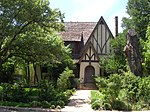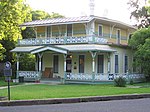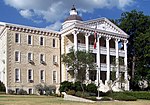El Camino Real de los Tejas National Historic Trail
2004 establishments in Louisiana2004 establishments in TexasColonial United States (Spanish)Historic trails and roads in LouisianaHistoric trails and roads in Texas ... and 4 more
National Park Service areas in LouisianaNational Park Service areas in TexasProtected areas established in 2004Spanish Texas

The El Camino Real de los Tejas National Historic Trail is a national historic trail covering the U.S. section of El Camino Real de Los Tejas, a thoroughfare from the 18th-century Spanish colonial era in Spanish Texas, instrumental in the settlement, development, and history of Texas. The National Park Service designated El Camino Real de los Tejas National Historic Trail as a unit in the National Trails System in 2004. The modern highways Texas 21 (along with Texas OSR) and Louisiana 6 roughly follow the original route of the trail.
Excerpt from the Wikipedia article El Camino Real de los Tejas National Historic Trail (License: CC BY-SA 3.0, Authors, Images).El Camino Real de los Tejas National Historic Trail
Cedar Street, Austin
Geographical coordinates (GPS) Address Nearby Places Show on map
Geographical coordinates (GPS)
| Latitude | Longitude |
|---|---|
| N 30.30077 ° | E -97.7351 ° |
Address
Cedar Street 3710
78705 Austin
Texas, United States
Open on Google Maps










